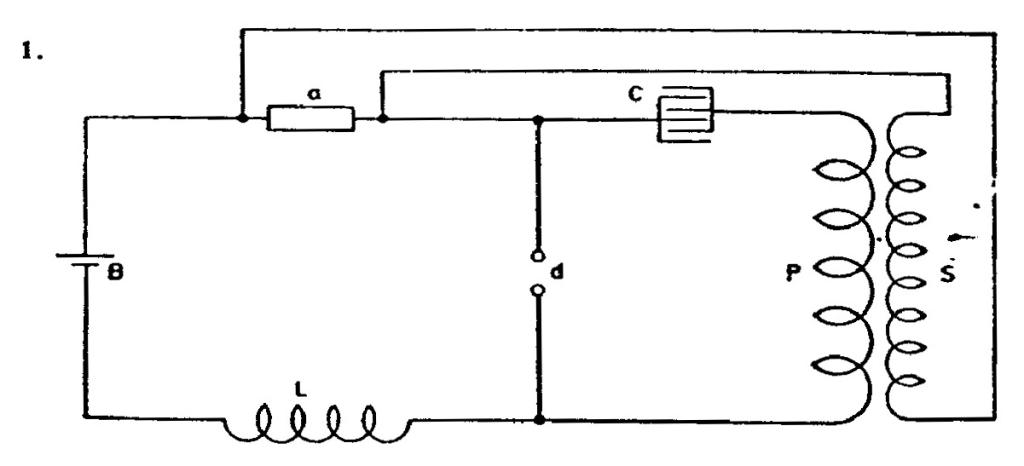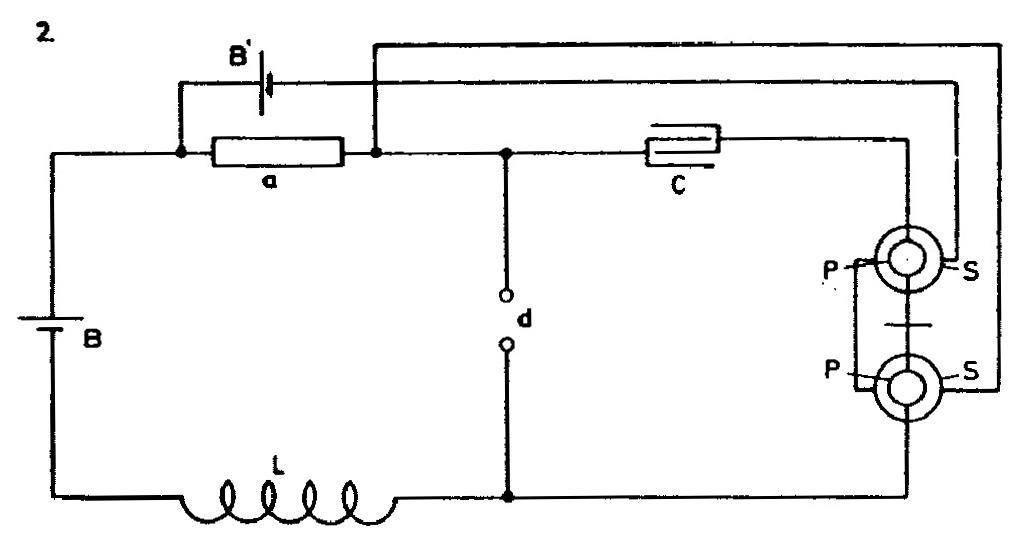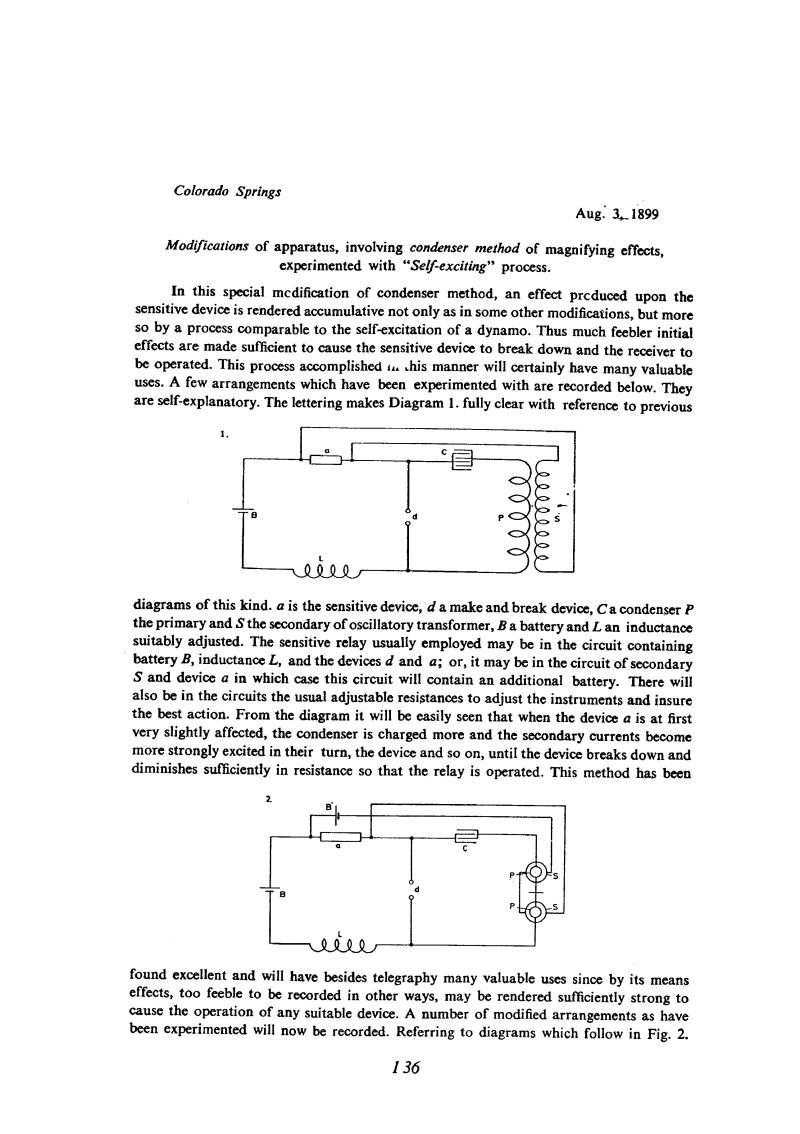
Nikola Tesla Books
Colorado Springs
Aug. 3, 1899
Modifications of apparatus, involving condenser method of magnifying effects, experimented with âSelf-excitingâ process.
In this special modification of condenser method, an effect produced upon the sensitive device is rendered accumulative not only as in some other modifications, but more so by a process comparable to the self-excitation of a dynamo. Thus much feebler initial effects are made sufficient to cause the sensitive device to break down and the receiver to be operated. This process accomplished in this manner will certainly have many valuable uses. A few arrangements which have been experimented with are recorded below. They are self-explanatory. The lettering makes Diagram 1. fully clear with reference to previous
diagrams of this kind. a is the sensitive device, d a make and break device, C a condenser P the primary and S the secondary of oscillatory transformer, B a battery and L an inductance suitably adjusted. The sensitive relay usually employed may be in the circuit containing battery B, inductance L, and the devices d and a; or, it may be in the circuit of secondary S and device a in which case this circuit will contain an additional battery. There will also be in the circuits the usual adjustable resistances to adjust the instruments and insure the best action. From the diagram it will be easily seen that when the device a is at first very slightly affected, the condenser is charged more and the secondary currents become more strongly excited in their turn, the device and so on, until the device breaks down and diminishes sufficiently in resistance so that the relay is operated. This method has been
found excellent and will have besides telegraphy many valuable uses since by its means effects, too feeble to be recorded in other ways, may be rendered sufficiently strong to cause the operation of any suitable device. A number of modified arrangements as have been experimented will now be recorded. Referring to diagrams which follow in Fig. 2.
136



